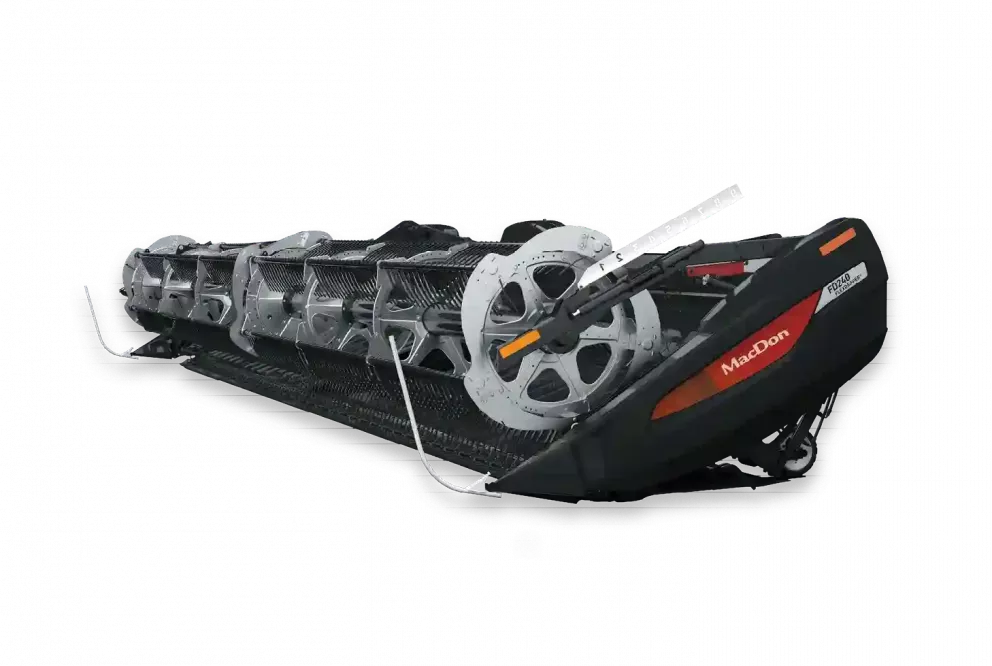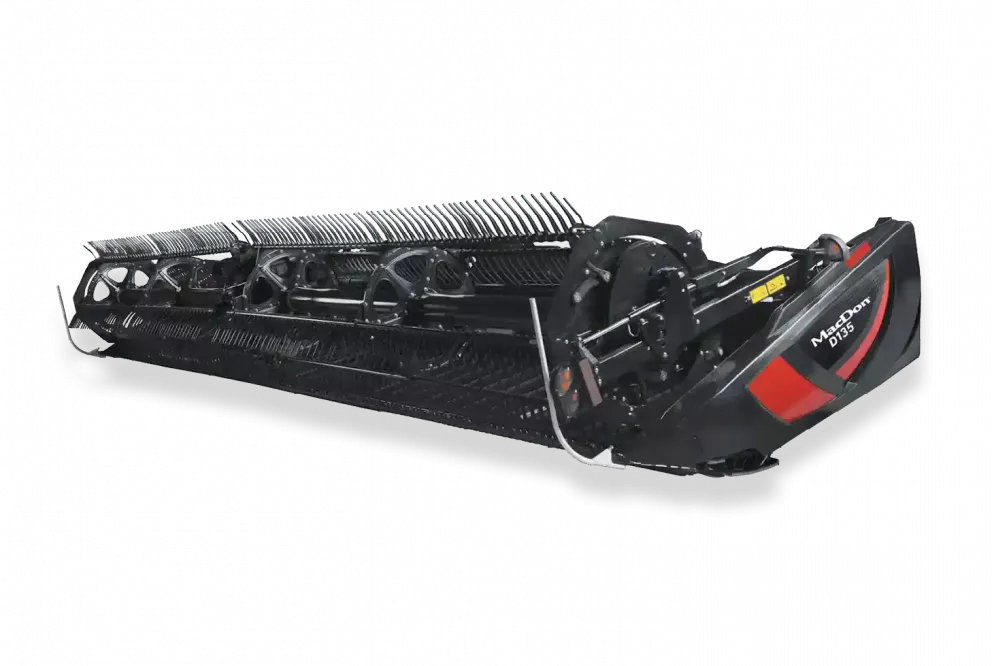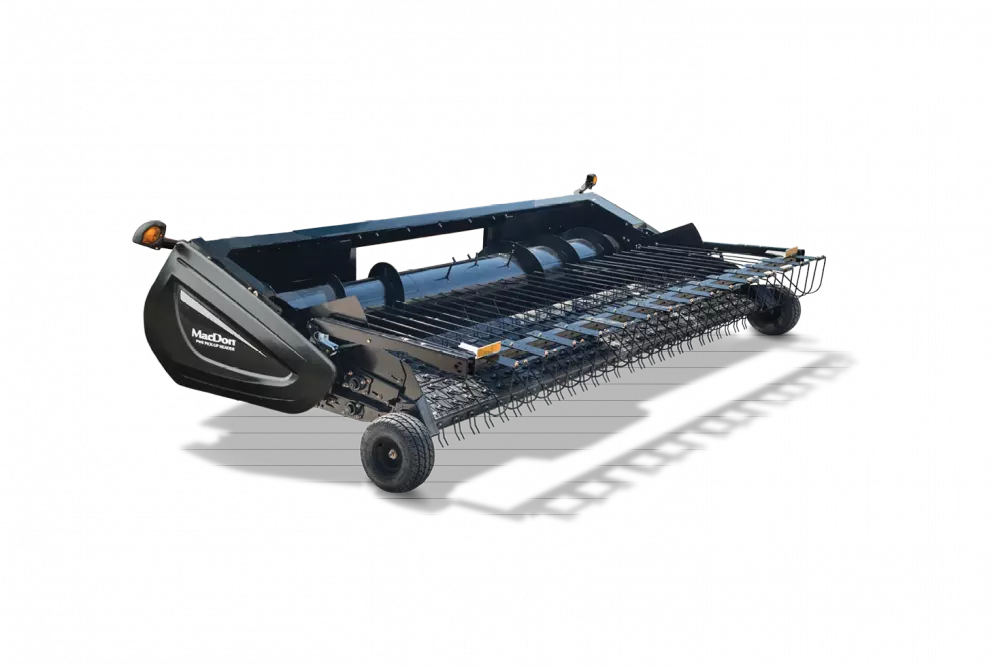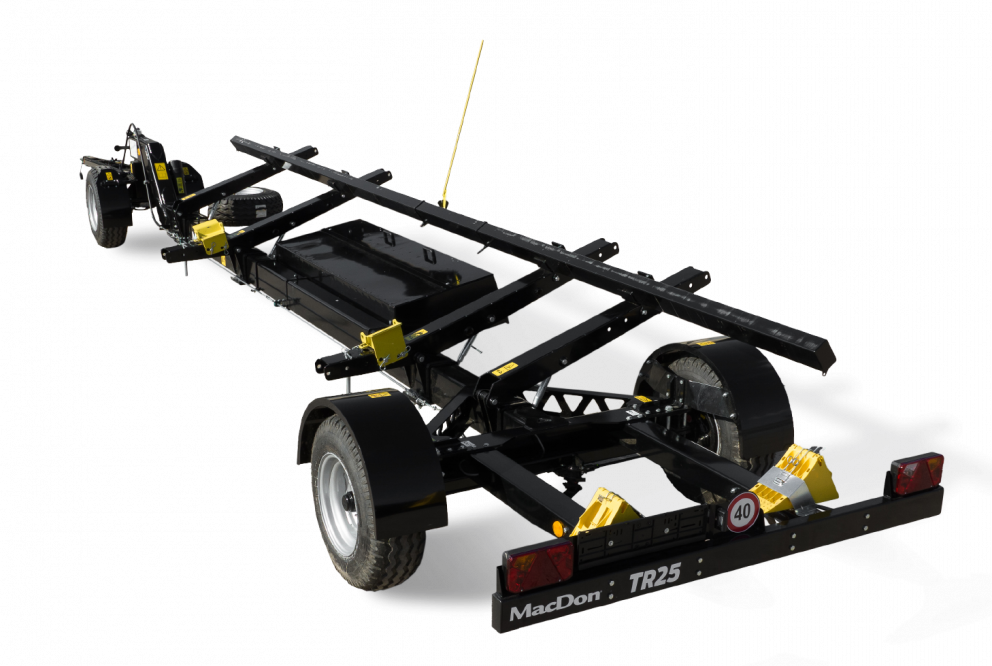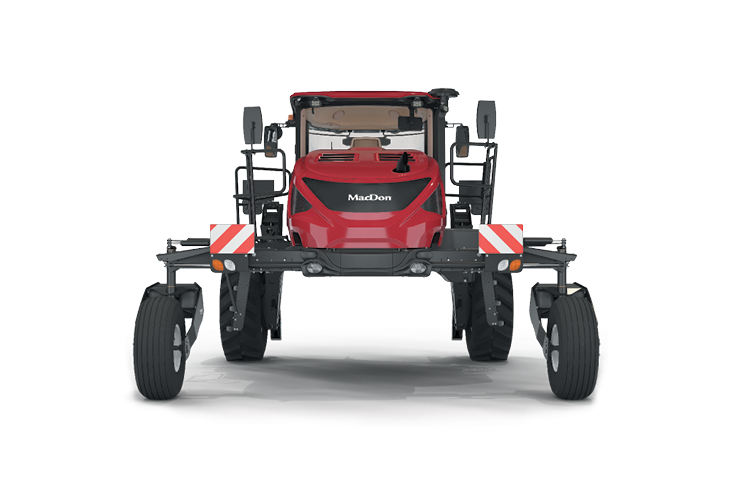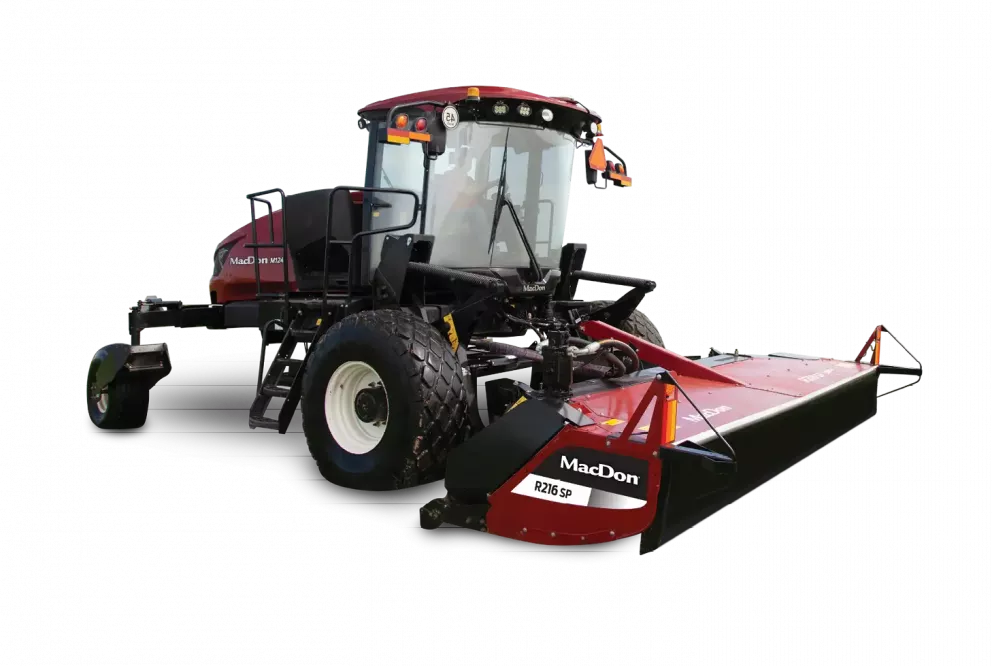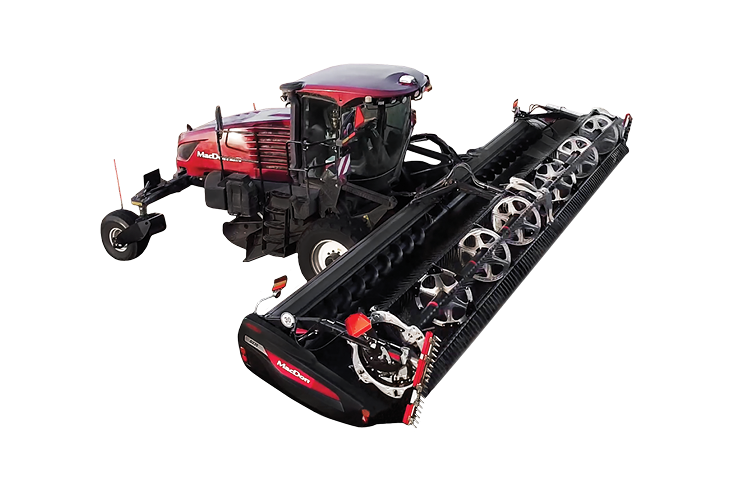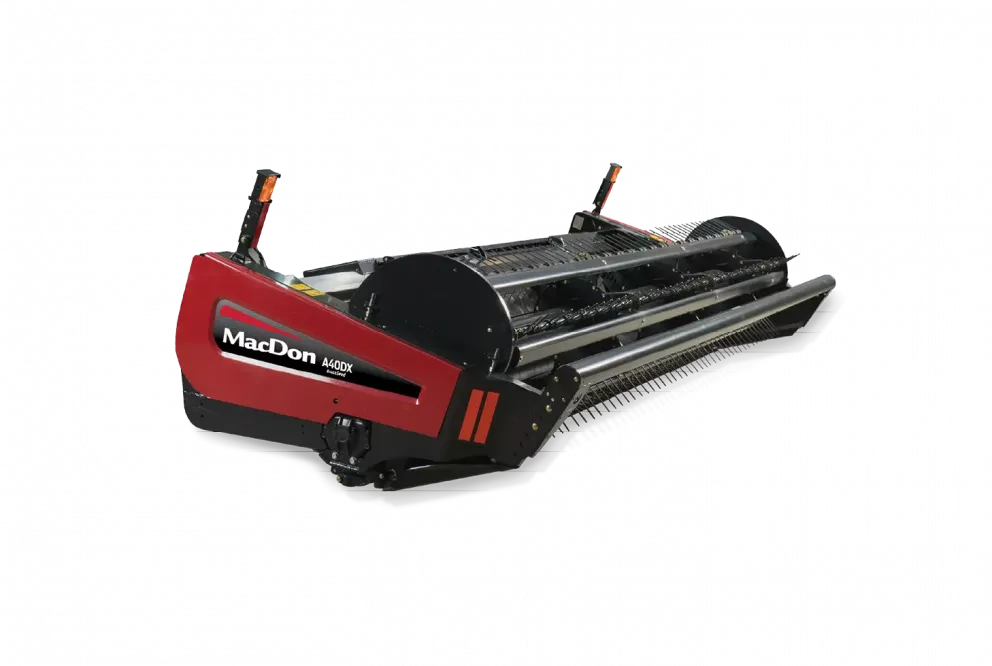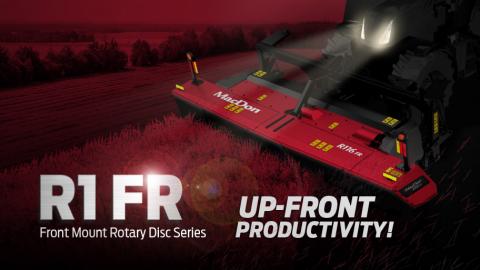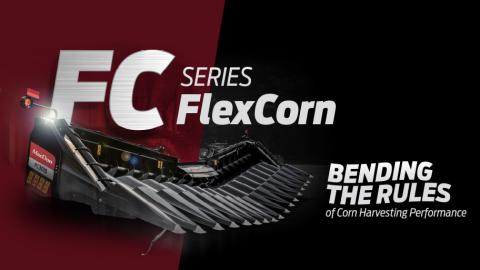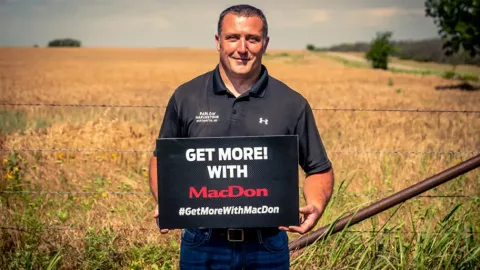Making the cut
MacDon’s R80 first rotary disc header to meet Sharp brothers’ high expectations.
WE’VE GONE FROM TWO MACHINES TO ONE MACHINE AND ONE OPERATOR
“That machine is fast!” It’s a comment David Sharp and his brother Clyde hear often from their neighbors about their MacDon M200 SP Windrower with its R80 Rotary Disc Header – the first rotary disc machine to finally be bought for their operation. The brothers own Lyreedale Farms near Roll in southwestern Arizona where they grow alfalfa for sale to local dairies. With 10 cuttings a year, windrower speed is an obvious asset, and David says that the M200/R80 machine is super fast both in and out of the field.
But on Lyreedale Farms, speed alone does not make a good hay machine. More important is the machine’s cutting and conditioning abilities. The hay has to be cut clean and evenly, conditioned uniformly, and handled gently if it is to achieve the quality level that local dairies demand.
“We’ve been looking at rotary machines seriously for a long time but we were never satisfied with the end results that they produced,” said Sharp who noted that the brothers have also tested rotary machines for other manufacturers trying to introduce their machines to the area. “These were extensive tests that we did and we were never satisfied with the quality of cutting – the cut was always very ragged. If you don’t do a good job, then the left over residue gets into your next cutting and that hurts the quality of the crop next time around.”
“We also felt like there was damage to the crop and that there was leaf bruising and stripping with the way that the product was handled going into the machine. We weren’t getting the best quality of alfalfa that we could get.”
But the Sharp’s impressions about rotary disc machines changed, albeit not immediately, when MacDon in December, 2007, asked if they could test their new M200/R80 package on their farm.
“When you have a new toy on the place, you’ve gotta play with it,” said David who said that they knew they were throwing the machine into a challenging situation. “Winter is one of the most difficult times for a rotary machine, because of moisture levels, lighter yields and frost damage, alfalfa is more of a challenge to cut.”
“To be honest, when we started off cutting we were not happy with it, so we called MacDon and they gave us several things to try. It turns out to be counter-intuitive to anything you know about putting up alfalfa. In winter conditions you slow the rotary down, slow your engine down and pick up your ground speed. Once we finally got that through our heads, then it was like ‘oh wow, this is great!’ That first cutting was a real learning experience.”
Sharp says that once they figured the machine out they were finally getting the level of cutting and crop handling that they needed to make the jump to a rotary machine.
“MacDon has addressed the deficiencies of rotary machines, and made such great strides in terms of cutting and crop handling that we felt it was time to step up and buy a rotary. We felt is was finally cost effective to go ahead and get the M200 and the R80 head because of the efficiency it could bring to our operation.”
He says that going to a rotary machine required that they do some prep work to their fields first to make sure that they were as level as they could be to accommodate the much higher field speeds.
“We needed a more uniform and smooth surface. We keep our alfalfa fields three, maybe four years, and we do ten cuttings a year. That means your swather is going to make 30 or 40 passes over that field in that time, so it’s worth making one more pass in your field to get it prepped right.”
According to Sharp, because of the significantly faster in-field cutting speed of the M200/R80, they’ve been able to park their other SP Auger Windrower (a MacDon M150 with an A40-D Auger Header) and do all of their harvesting with just one machine. He says that the increased productivity of the A40-D machine had already made a big impact on their operation by reducing their harvesting from a two machine job to a one-and-a-half machine job.
“Most definitely we can measure the value of the machine in terms of our bottom line. We’ve gone from two machines to one-and-a-half machines to one machine and one operator. That’s had a dramatic impact for us.”
Adding to the bottom line is the very significant benefits the Sharps have enjoyed from the AutoSteer™ GPS guidance system that they have also been testing on the machine. Custom fit for MacDon’s M Series Windrowers by AutoFarm, the GPS guidance system is allowing the Sharps to squeeze every last bit of efficiency out of their machine.
“When you’re operating at 12 MPH (19 km/h) and trying to watch everything, to have the guidance system do the steering for you alleviates a lot of operator fatigue. Also, with the guidance system every windrow is uniform and the same width, which is important when it comes time to rake and bale because you don’t have heavy windrows and light windrows. For example, if you have an operator that tends to overlap six or twelve inches, well you’ve wasted that machine and you’ve wasted that fuel by that much. GPS guidance eliminates that and lets you get the maximum amount of width out of every pass.”
And the job they’re doing with their new “toy” is starting to get noticed in their area.
“We see people out there in our field looking at what type of job that it is doing,” said Sharp who added that most of their comments are positive and they like what they see. After all, what’s not to like about a machine that does the job of two?
